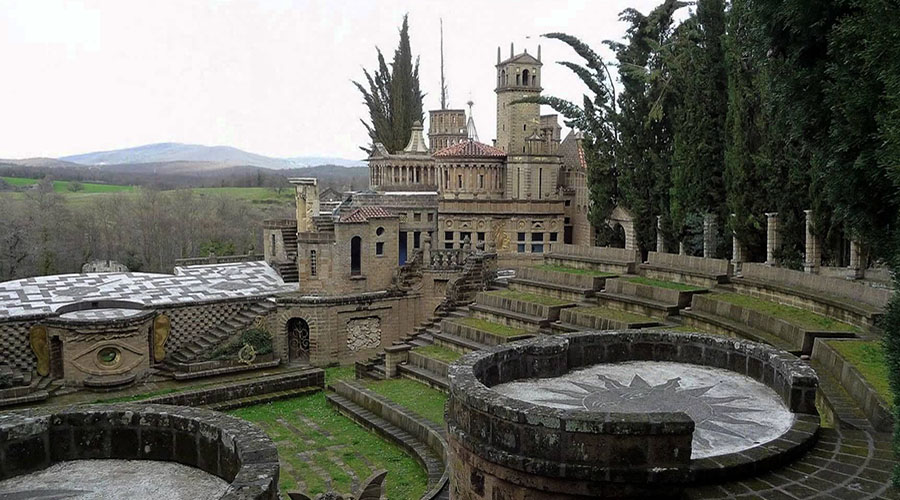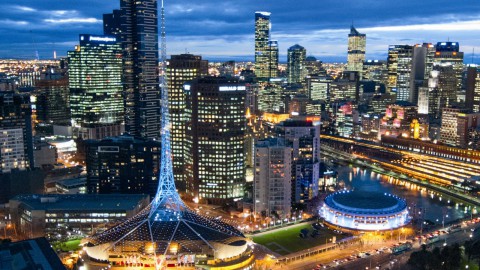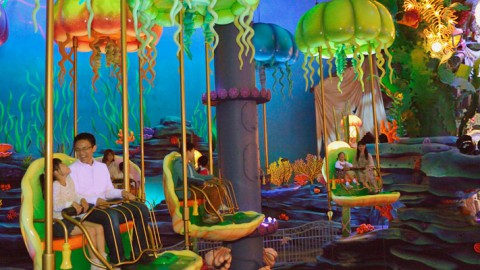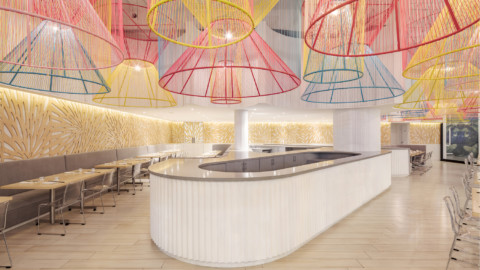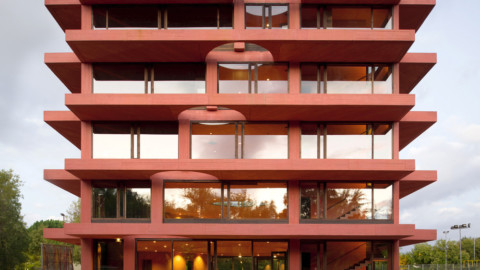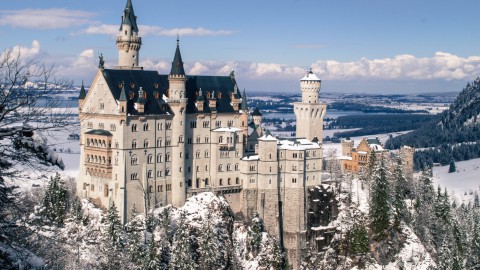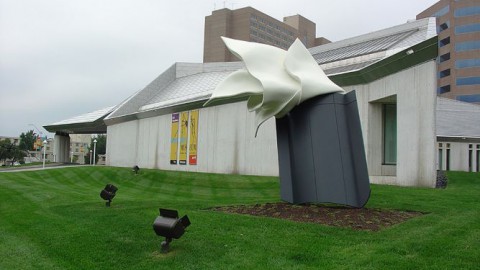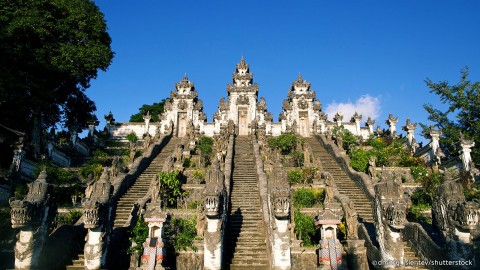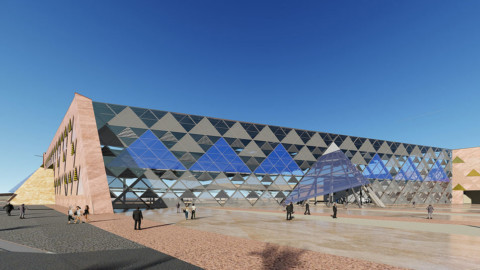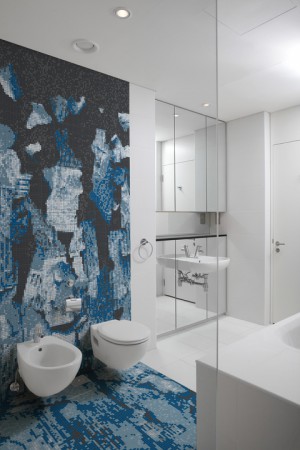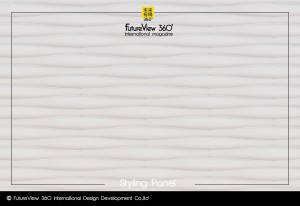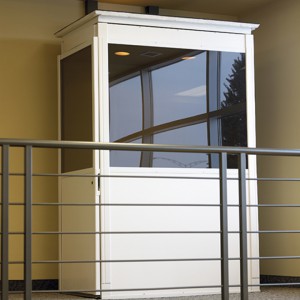La Scarzuola Montegabbione
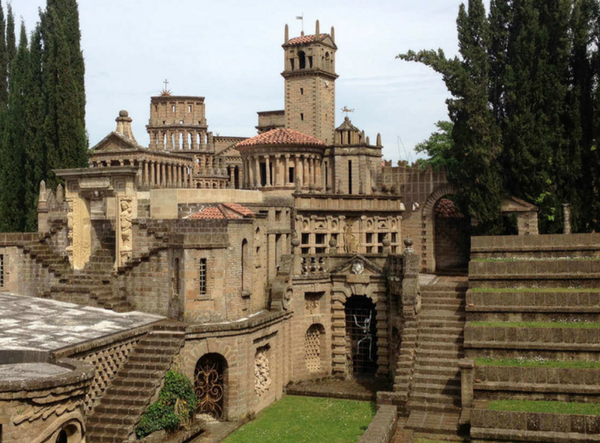
La Scarzuola is a rural town in Umbria, located in the Montegiove district of the municipality of Montegabbione, in the province of Terni. It is well known for the ancient convent where, according to tradition, St. Francis of Assisi lived, and for the villa in the form of a “city-theater”, conceived and built in the twentieth century by the Milanese architect Tomaso Buzzi as a personal interpretation of theme of the “ideal city”.
La Scarzuola是翁布里亞的一個鄉村小鎮,位於特爾尼省Montegabbione市的Montegiove區。 它以古老的修道院而聞名,根據傳統,阿西西的聖弗朗西斯居住,以及“城市劇院”形式的別墅,由米蘭的建築師Tomaso Buzzi在二十世紀構思和建造,作為對其的個人解釋。 “理想城市”的主題。
History
The town is mentioned in medieval chronicles as the one in which, in 1218, St. Francis built a hut at the point where he had planted a rose and a laurel and from which a fountain had miraculously gushed. The hut was built with a marsh plant named Scarza, from which the name Scarzuola would derive. Later, to remember the event, the counts of Marsciano had a church built there and then a convent, both entrusted to the Friars Minor, who remained there until the last years of the eighteenth century, when the Marquis Misciatelli of Orvieto took possession of them.
In the second half of the twentieth century, more precisely in December 1957, the Milanese architect Tomaso Buzzi acquired ownership of the entire complex, creating an “ideal city” next to it that represented it, a real eschatological allegory of existence, adopting the language Hermetic characteristic of the eighteenth-century Masonic aristocracy.
歷史
在中世紀的編年史中提到了這個城鎮,在1218年,聖弗朗西斯在他種植玫瑰和月桂樹的地方建造了一間小屋,其中一個噴泉奇蹟般地噴湧而出。 小屋建有一個名為Scarza的沼澤植物,Scarzuola的名字來源於此。 後來,為了紀念這件事,馬爾夏諾的統計在那裡建了一座教堂,然後是一座修道院,兩人都託付給了修道士小修道士,直到十八世紀的最後幾年,當奧維多的侯爵米西亞內利掌握了他們時,他一直留在那裡。
在二十世紀下半葉,更確切地說是在1957年12月,米蘭的建築師托馬索·巴齊(Tomaso Buzzi)獲得了整個建築群的所有權,創造了一個代表它的“理想城市”,一個存在的真正的末世論寓言,採用了這種語言 十八世紀共濟會貴族的密封特徵。
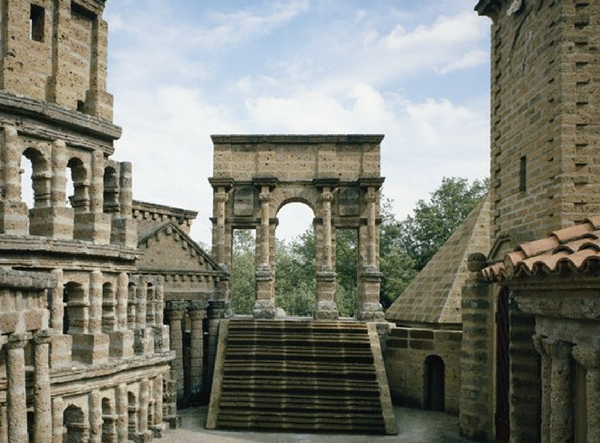
The ideal city of Buzzi
From 1958 to 1978, the architect designed and built, in the valley behind the convent, a large theatrical scene that he called “a stone anthology”, which remained voluntarily unfinished, which allowed the recovery of visual experiences of the past: Villa Adriana for the gym, pool, spa etc., Villa d’Este (Tivoli) for Rometta by the architect-archaeologist Pirro Ligorio, the seven buildings in the Acropolis (Parthenon, Colosseum, Pantheon, Pyramid, Torre dei Venti, Temple of Vesta, the clock tower of Mantua); Bomarzo for the effect of play and wonder (boat, Pegasus, monster). Only in theatrical function are the constructions out of time, the false ruins, the ideal cities fully legitimate. The engagement in the subject of scenography is that of Renaissance models by Andrea Palladio, Vincenzo Scamozzi and Sebastiano Serlio.
The complex develops inside a spiral formed by the pergolas. Inside these there is a vertical axis that from the skeletal statue of the Pegaso, through a system of terraces, leads to an amphitheater, gradually to the agnostic theater, to the grassy theater, to finish at the broken column tower and at a horizontal axis delimited on the left from the bee theater, in the center from the stage with a musical labyrinth, and to the right from the Buzziana city with the Acropolis at its peak. A contradictory initiatory relationship is established between the ancient convent and the intellectualist theater factories, overloaded with symbols and secrets, references and quotations: from allusions to both pagan and Christian divinities, to the memories of Pliny’s Villas, to the “AB OLIMPO” by Montagna, to the Hypnerotomachia Poliphili by Frate Colonna, to the non-concrete ideas of Francesco Borromini and Filarete.
The complex symbology created by Buzzi makes it possible to identify a second interpretation of the entire urban complex. The intricate initiatory path, which unfolds between the buildings of the city, represents a comparison with the unconscious and is completed through a series of meetings with archetypal figures, according to the model of individuation developed by C. J. Jung. The encounter with the figures that populate the city, symbolizing the different aspects of the psyche, gradually leads the visitor to a greater self-awareness, in a metaphorical path of rebirth that descends into the deepest and darkest parts of the unconscious and then reaches Acropolis, symbol of the full realization of the Self.
The style that best interprets Buzzi’s license anxiety is the neo-mannerism that he also identifies in the use of stairs and ladders in all dimensions, extensions of architectural members, variety of rustic ways, a few monsters, deliberate disproportions of some parts, green statues in the Arcimboldi, bundling of buildings, monuments, something labyrinthine that reaches a certain surrealism, evocative, sinuous, anthropomorphic, geometric, astronomical, magical.
When Buzzi died in 1981, the city was only partially built but, thanks to the sketches left, the heir Marco Solari finished the work.
Buzzi的理想城市
從1958年到1978年,建築師在修道院後面的山谷中設計和建造了一個大型的戲劇場景,他稱之為“石頭選集”,它仍然是自願未完成的,這使得過去的視覺體驗得以恢復:Villa Adriana for健身房,游泳池,水療等,埃斯特別墅(蒂沃利)的建築師考古學家羅梅塔皮羅·利戈里奧,七幢雅典衛城(帕台農神廟,鬥獸場,萬神殿,風的金字塔塔,灶神星寺,曼圖亞鐘樓); Bomarzo為戲劇和奇蹟(船,飛馬座,怪物)的效果。只有在戲劇功能中才有時間的建築,虛假的廢墟,理想的城市完全合法。場景主題的參與是Andrea Palladio,Vincenzo Scamozzi和Sebastiano Serlio的文藝復興時期模特。
複合體在由藤架形成的螺旋內部形成。在這些有從飛馬的骨骼雕像垂直軸,通過檯面的系統,它會導致一個露天劇場,逐漸不可知的劇院,草地劇院,完成路線柱塔,橫軸接壤,左從蜜蜂劇院出發,在舞台中央,有一個音樂迷宮,右邊是Buzziana城,最高峰是雅典衛城。古代修道院與知識分子戲劇工廠之間建立了一種矛盾的起源關係,載有符號和秘密,參考文獻和引文:從典故和異教徒的神聖典故,到普林尼別墅的記憶,到Montagna的“AB OLIMPO”,Frate Colonna對Hypnerotomachia Poliphili,以及Francesco Borromini和Filarete的非具體想法。
Buzzi創建的複雜符號系統可以識別整個城市綜合體的第二種解釋。根據C. J. Jung開發的個性化模型,在城市建築物之間展開的錯綜複雜的起源路徑代表了與無意識的比較,並通過與原型人物的一系列會議完成。與居住在城市中的人物的相遇,象徵著心靈的不同方面,逐漸引導遊客進入更大的自我意識,在一個重生的隱喻路徑中,下降到無意識中最深和最黑暗的部分然後到達雅典衛城,充分實現了自我的象徵。
最能解釋Buzzi牌照焦慮的風格是他在使用各種尺寸的樓梯和梯子,建築成員的延伸,各種鄉村風格,一些怪物等方面的新習慣。故意在一些部分不成比例,在Arcimboldi的綠色雕像,建築物的捆綁,紀念碑,迷宮般的東西達到一定的超現實主義,令人回味,蜿蜒,擬人化,幾何,天文,神奇。
當Buzzi於1981年去世時,這座城市只是部分建成,但由於留下了草圖,繼承人Marco Solari完成了這項工作。
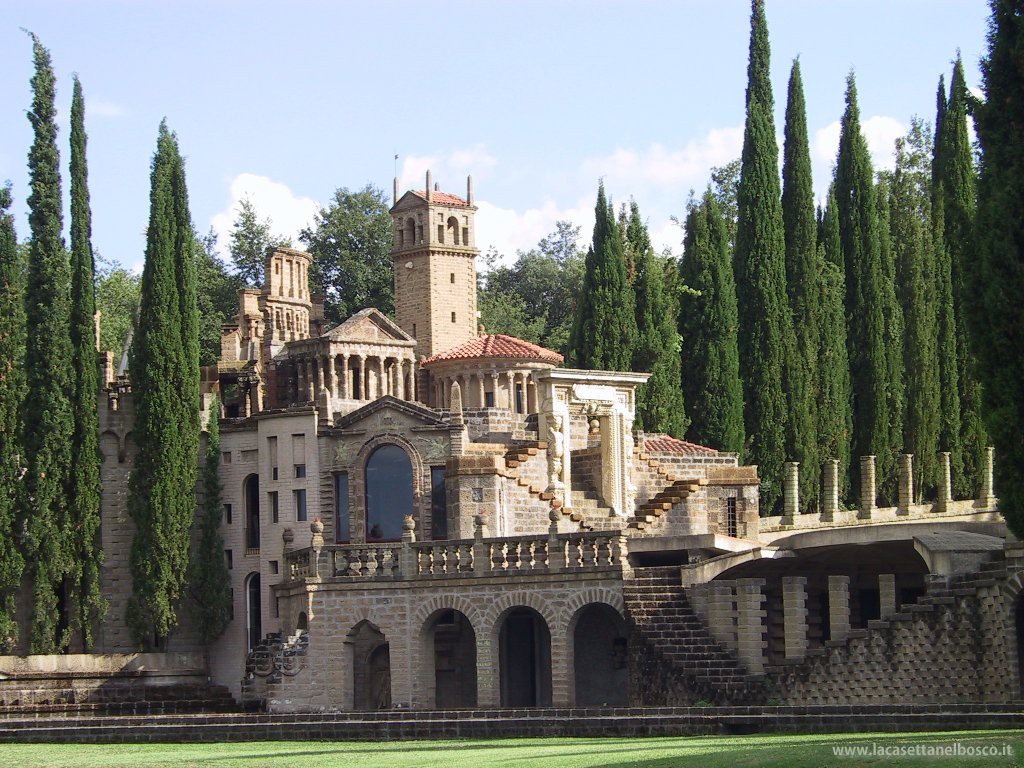
FROM:https://it.wikipedia.org/wiki/La_Scarzuola
FROM:UMBRIA – LA SCARZUOLA CITTA’ IDEALE [full HD]
Don’t you think it’s addictive?
Want to know more about the beauty of architecture?
Come and join our members to explore the beauty of architectural design.
覺得看得不過癮嗎?
想要知道更多建築之美嗎?
快來加入我們的會員,一同探索建築設計之美。
The above article is purely for appreciation and sharing purposes, as well as the construction of new technology and the public can be in-depth understanding of the information at the same time there are sources, will be able to query, no use of the document as a commercial transaction, if illegal, please inform the We will immediately remove the site, thank you for cooperation.
以上文章純粹作為欣賞及分享用途,以及將建築新型技術傳遞給與大眾能夠深入了解,同時資料還有來源,將可查詢,絕無使用該文件資料作為商業交易行為,如有違法請務必告知該網站我們將立即處理撤除,謝謝合作。

